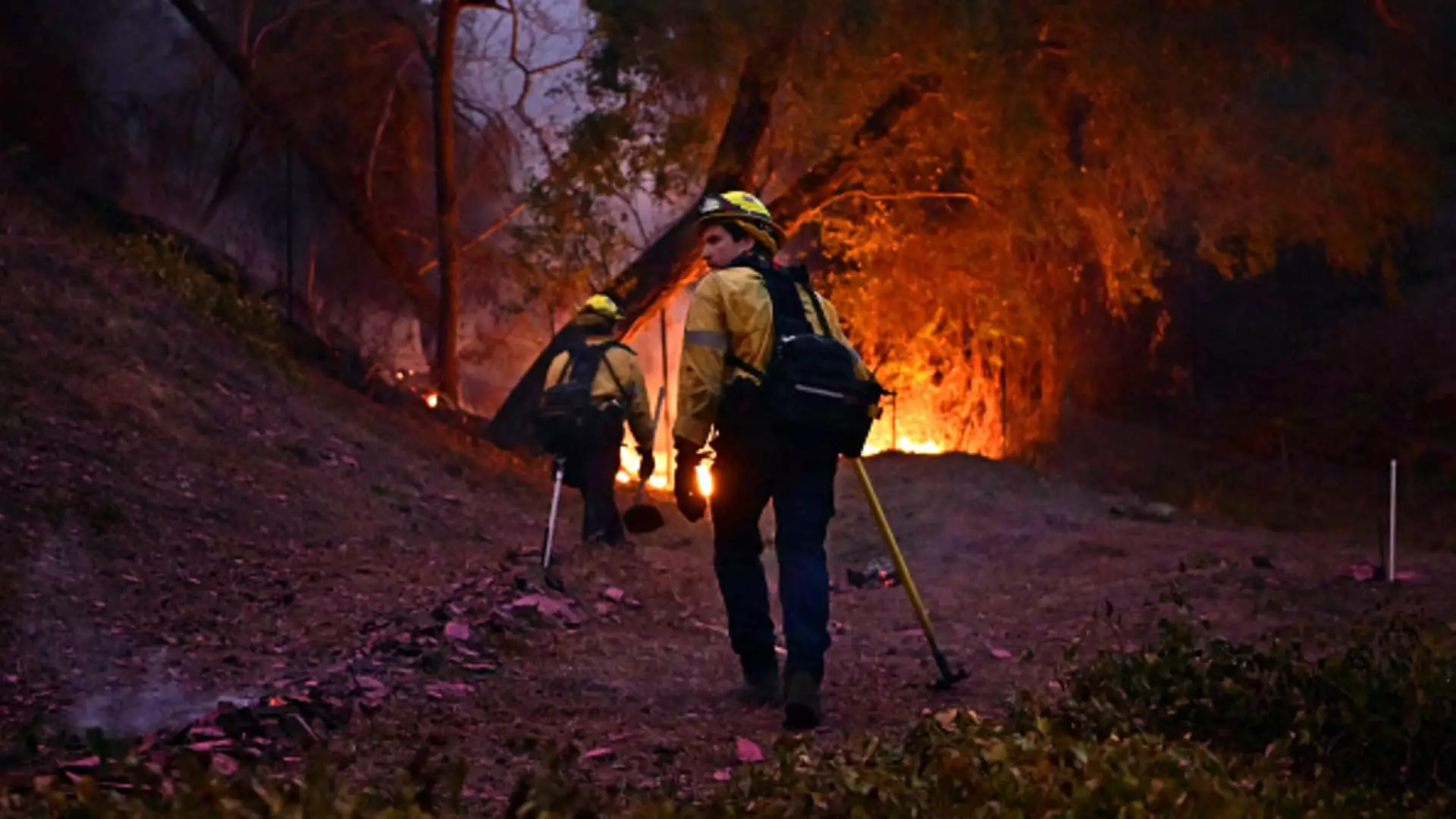The wildfires currently assaulting California have turned the serene landscapes of Los Angeles County into scenes of unimaginable destruction. As reported by local authorities, the death toll associated with these relentless blazes has tragically escalated to 16 confirmed fatalities, a number that is likely to increase as recovery efforts gain momentum. The ongoing investigations reveal that the Palisades Fire and Eaton Fire are responsible for five and 11 of these fatalities, respectively. The medical examiner’s office continues to sift through debris and communicate with grieving families, a grim reminder of the price paid during this environmental catastrophe.
Firefighters on the ground are faced with the unrelenting challenge of curtailing the fires’ spread. The development of a centralized location for reporting missing persons showcases the urgent need for families to reconnect with their loved ones amidst chaotic evacuations. With the flares of potential wind gusts approaching, the situation remains precarious, keeping local residents on high alert. Nature’s volatility, exacerbated by dry conditions and gusty winds, has led authorities to classify this wildfire disaster as one of historic proportions.
With fires creeping dangerously close to high-profile landmarks like the J. Paul Getty Museum and UCLA, firefighters are under immense pressure to contain the spreading flames. In Mandeville Canyon, which houses notable celebrities, aerial support in the form of helicopters plays a crucial role in attempting to douse the flames. Ground crews equipped with hoses work tirelessly against flames that threaten to engulf their community. CalFire Operations Chief Christian Litz emphasized the need for an aggressive approach in battling the Palisades Fire, stating that minimizing its advancement is paramount to safeguarding countless families.
The heartbreaking reality is that the flames do not discriminate, sparing nobody in their weighty wrath and leaving countless Angelenos evacuating their homes. County Supervisor Lindsey Horvath expressed the sheer terror that has beset the community, identifying nightfall as a particularly distressing time as evacuation orders expand. The looming threat of the notorious Santa Ana winds, known to exacerbate fire conditions significantly, heightens anxiousness among the already beleaguered populace.
As officials engage in the painstaking effort of searching for survivors and identifying the deceased, Los Angeles County Sheriff Robert Luna assures the community that dedicated teams are diligently combing through the wreckage. The establishment of a family assistance center in Pasadena indicates an organized response to the collective trauma, but the prevailing sense of loss remains palpable. While many residents are drawn back to their homes, determined to salvage belongings, they are met with the harsh reality presented by ash and debris, which often harbors toxic elements.
The unfolding tragedy has stimulated an outpouring of support from the community. Donation centers are flooded with volunteers offering supplies to those impacted, with notable scenes of desperation unfolding at locations like the YMCA in Koreatown and Santa Anita Park. The spirit of camaraderie is striking; however, the challenges of managing overwhelming responses to aid have left many well-intentioned supporters turned away. Some residents, now homeless, face a daunting future as they sift through piles of donated items seeking comfort in familiar objects.
In the aftermath of such a large-scale disaster, questions arise regarding the infrastructure and preparedness of emergency resources. Allegations are surfacing about leadership failures, with California Governor Gavin Newsom ordering a deep probe into the inadequacies that contributed to this disaster. The failure of a crucial water reservoir and malfunctioning hydrants has necessitated urgent scrutiny, shedding light on systemic flaws within fire response frameworks.
Los Angeles Fire Chief Kristin Crowley has voiced her discontent regarding the city’s allocation of funds to support firefighting efforts. Her appeal for adequate resource provision highlights how bureaucratic shortcomings can significantly hinder effective emergency management during critical moments like these. The notable uptick in the scale of wildfires, coupled with the long-standing drought conditions in Southern California, underscores a pressing need for reimagined fire management strategies and policies that protect lives and property.
As residents strive to recover from a tragic event that has claimed both life and home, it’s clear that rebuilding will take time. Yet, in the wake of adversity, the spirit of resilience shines forth. For the city of Los Angeles, grappling with destruction on this scale serves as a brutal reminder of the delicate balance between human development and the forces of nature. The road ahead is uncertain, but with concerted efforts from local authorities, community members, and advocacy for improved infrastructure, there exists hope for a more robust response to natural calamities in the future.


Leave a Reply